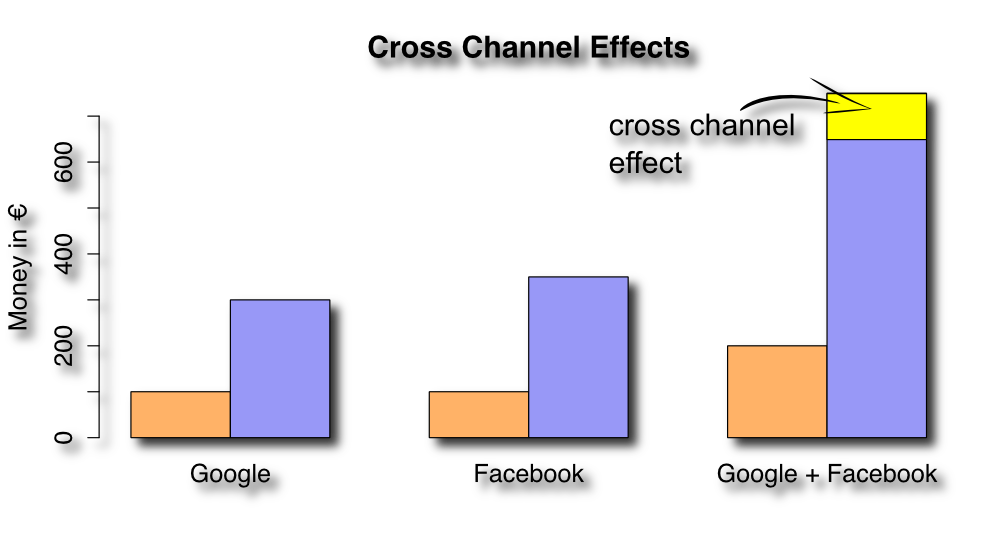 In the last 3 years the online tracking tools like Google Analytics, Omniture, Kissmetrics or CoreMetrics made a lot of progress. Besides normal click counting they more and more turned into controlling tools that show how your marketing budget affects your online sales.
In the last 3 years the online tracking tools like Google Analytics, Omniture, Kissmetrics or CoreMetrics made a lot of progress. Besides normal click counting they more and more turned into controlling tools that show how your marketing budget affects your online sales.
Lately Google analytics introduced multi-channel-funnels showing what customers did before placing an order on your website.
This is a very useful tool and you can see what an average customer journey is before ordering in your online store. They also introduced attribution modelling. This statistical tool gives you the opportunity to have different weightings for different positions in the funnel for a certain channel.
Cross channel marketing effects
The idea is that you should be able to measure your cross marketing effects. These effects appear if a customer has multiple touch points with your brand via different channels. The important thing about these effects are that the trust rises and the amount of money which is spend too.
A short example. Imaging you spend in the first month 100 € in Google Advertising and you make 300 € revenue then you spend in the second month 100 € for Facebook advertising and you make 350 € advertising. In the third month you are spending 200 €, 100 € for Google, 100 € for Facebook. You would expect that you make 650 € revenue but in reality you make 750 €. So 100 € is your cross channel effect.

Does attribution modelling make sense?
The clear answer is: no. The problem is that nobody can tell you for sure if a certain channel is more important then another and if you think that display advertising is more effective then ad word auctions it is easy to set up a model that will prove your point. This can be seen as a self fulfilling prophecy. So this is an easy way for an online marketer to be always right.
So how do I get a real model?
Unfortunately the answer is A/B testing. If you want to have inference you have to benchmark every different variant of your marketing efforts. Let’s assume that you have 10 different channels where you are doing marketing e.g. offline catalogue, website, search engine marketing, phone marketing, fairs, etc.
Now you have to knock off one of these channels for a certain time. To get significant effects and remove seasonality effects it should run for a year. So you already need 10 years to checkout how effective every channel is. If you now want to find cross channel effects you have to knock off 2, 3, 4, … 10, you get the point. This means you have 210 different combinations. This is equivalent to 1024 years of testing to find all the cross channel effects.
The incentergy platform is not built for telling you how high your cross channel marketing effects are. Instead it tries to find as cheaply and quickly as possible the best combination of marketing campaigns across all channels.
Leave a Reply